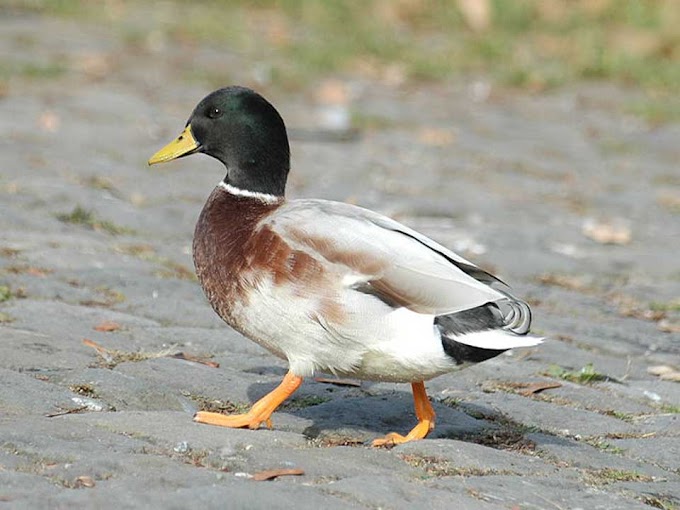Domestic pig, frequently named as “Swine”, “Hog”, or simply “Pig”
when there is no desire to differentiate it from other pigs, is a domesticated big,
even-toed ungulate. It is variously thought a subspecies of the wild boar or a different
breed.
While as livestock, domestic pigs are farmed mostly for eating
their meat, titled pork. The animal's bones, skin, and hairs are also used in marketable
products. Domestic pigs, particularly miniature pigs, are kept as pets.
Size and Weight
The normal body length of domestic pig ranges between 35
inches to 71 inches (0.9 to 1.8 meter). The weight of an adult can be between
110 lb and 770 lb (50 and 350 Kg). Matched to other artiodactyls, its head is comparatively
extended, pointed, and free of warts.
Lifespan
The normal life expectancy of domestic pig breeds is 15 to 20
years.
Domestic Pig Breeds
Various breeds of domestic pig found in several colors, figures,
and sizes. According to “The Livestock Conservancy”, three breeds of domestic
pigs are critically infrequent. As worldwide populace is less than 2000 individuals. These
breeds include Choctaw hog, Mulefoot, and Ossabaw Island pig. The recognized tiniest
domestic pig breed all over the world is “Göttingen Minipig”, normally considering
about 57 lb (26 Kg) as a strong, full-grown adult.
Domestic Pig Farming
Domestic pigs are commonly farmed in livestock for their meat,
pork. The other food products prepared from the pigs comprise pork sausage,
bacon, gammon, ham, and pork rinds. The head of a pig is used to produce
preserved jelly named “head-cheese”, which is occasionally branded as ‘brawn’.
Liver, chitterlings, blood, and other organs of the pigs are also broadly used as
a food. In some religions, for instance, Judaism and Islam, pork is forbidden food.
The pig-milk is also consumed by humans, but as there are
some problems in getting it, therefore, have slight commercial production.
The livestock-pigs are shown at agricultural-shows, arbitrated either as stud
stock associated with the standard features of each pig species or in commercial groups
where the animals are arbitrated mostly on their fittingness for slaughter to offer
the best meat. The skin of a pig is used to manufacture seat covers, apparel,
pork rinds, and other objects.
Domestic Pigs as Pets
Vietnamese pot-bellied pigs, a minor breed of domestic-pig,
have made common pets in the USA opening in the latter half of the 20th
century. They were rapidly hybridized with a variety of other minor breeds for
example “Göttingen Minipig” with distinct locations breeding diverse pedigrees.
These miniature pigs will soon increase acceptance. Consequently, various pet
pigs are now of unidentified genetic descent.
Domestic pigs are very brainy, social and emotional breeds.
They are thought to be hypoallergenic and are recognized as fairly good with
people who have usual animal allergies.
Domestic Pig Behavior
In various ways, the behavior of domestic pigs seems to be
intermediate than other artiodactyls and flesh-eaters. The domestic pigs desire
for the company of other pigs and commonly groups to preserve bodily interaction,
although they do not evidently form large groups. They generally live in groups
of 8 to 10 individuals, some young pigs, and some single-males.
For of their comparative lack of sweat glands, pigs frequently
control their body-temperature using social thermoregulation. Self-pitying,
which frequently contains coating the body with mud, is a behavior often showed
by pigs. They do not submerge entirely under the mud but differ the depth and period
of self-pitying depending on ecological conditions. Usually, adult pigs start
wallowing once the ambient temperature is about 17°C to 21°C. They shelter
themselves from head to toe in mud.
Rooting
Digging is a visceral behavior in pigs that is considered by
a pig nudging its snout into something. Like as cat’s kneading, rooting is
found soothing, first occurs when they are born so as to get their mother’s
milk, and can become a wonted, compulsive behavior which is most protuberant in
animals weaned too early. Frequently, pigs will root and dig into the ground to
search for food. Rooting is also considered as a source of communication.
Nest Building
Social nature of domestic pigs which they share with flesh-eaters
is nest-building. Sows root in ground to create dejections and then form nests
in which they give birth. Primary, the sow digs a depression about her body size.
She then gathers branches, grasses, and leaves, and conveys these in her mouth
to the depression, building them into a mound. She allocates the softer, better
material to the middle of the mound with her feet. When the mound extends to
the required height, she places big branches, up to 2 meters in length, on the shallow.
She goes on the mound and roots around to make a depression within the collected
material. She then gives birth in a lying position that is usually dissimilar
from other artiodactyls which commonly give birth in a standup position.
Nest-building performance is a significant part of the process
of pre and post-partum nurturing behavior. Nest-building will happen during the
last 24 hours before the start of farrowing and converts to most powerful
during twelve to six hours before farrowing. Nest-building is distributed into
two stages: one of which is the early phase of digging in the ground while the next
phase is the gathering, carrying and placing the nest substantial. The sow will
detach from the crowd and look for an appropriate nest site with some protection
from rain and wind that has well-drained soil. This nest-building conduct is done
to provide the descendants with lodging, security, and thermoregulation.
The nest will safeguard from weather and predators while
keeping the piglets nearby the sow and away from other members of the group.
Nest-building can be influenced by inner and outer incentives. The longer time consumed
on nest-building will increase prepartum oxytocin.



















0 Comments